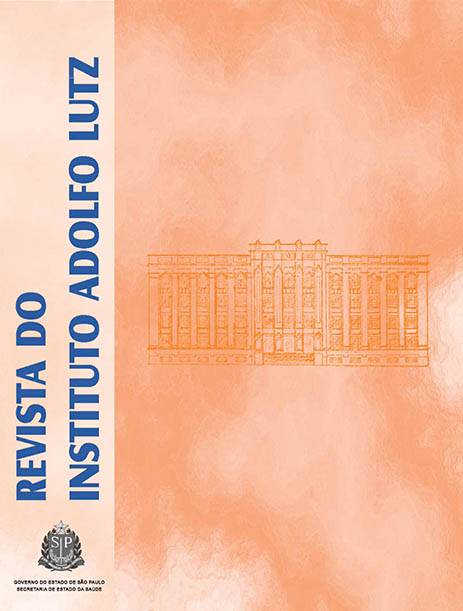Abstract
This study aimed at evaluating the predictive potential of the conventional Hen’s Egg Chorionallantoic Membrane (HET-CAM) test and its version CAM-TBS, that quantifies the damage to the membrane cause by absorption of dye trypan blue, in order to propose an alternative assay for assessing the ocular toxicity. Twenty collyria were evaluated in vivo by means of Draize eye irritation test, and by in vitro HET-CAM and CAM-TBS assays. All the analyzed collyria were classified as non-irritant by in vivo testing. In HET-CAM assay, 4 false positive results were observed, and the test specificity and accuracy were of 80%. CAM-TBS showed a better performance, having specificity and accuracy of 100%. The cut-off set up for HET-CAM test (0.9) is discussed, as the false-positive results observed in this study could have been bypassed if the category “non-irritant” encompassed “non-irritant” and “mild irritant” products, in compliance with the criteria recommended for CAM-TBS (cut-off = 7.0).References
1. Draize JH, Woodard G, Calvery HO. Methods for the study of irritation and toxicity of substances applied topically to the skin and mucous membranes. J Pharmacol Exp Ther. 1944;82:377-90.
2. Draize JH. Appraisal of the safety chemicals in foods, drugs and cosmetics. In: Drugs and cosmetics: dermal toxicity. Austin: Association of Food and Drug Officials of the United States; 1959. p. 46-59.
3. Cruz AS. Teste de citotoxicidade in vitro como alternativa ao teste in vivo de Draize na avaliação de produtos cosméticos. [tese de doutorado]. São Paulo (SP): Universidade de São Paulo; 2003.
4. Mehling A, Kleber M, Hensen H. Comparative studies on the ocular and dermal irritation potential of surfactants. Food Chem Toxicol. 2007;45(5):747-58.
5. Worth AP, Ball M. Alternative (non-animal) methods for chemical testing: current status and future prospects. ATLA. 2002;30(1):13-9.
6. Abreu CLC, Presgrave OAF, Delgado IF. Metodologias alternativas à experimentação animal: aplicação no controle da qualidade de produtos sujeitos à ação da Vigilância Sanitária. Rev CFMV. 2008;45:20-7.
7. Presgrave OAF, Caldeira C, Gimenes I, Freitas JCBR, Nogueira STB, Oliveira NDE, Oliveira AGL, Silva RS, Alves EN, Presgrave RF. Métodos alternativos ao uso de animais: uma visão atual. Ciênc Vet Trop. 2010;13(1):106-17.
8. Reinhardt V. Taking better care of monkeys and apes. Washington: Animal Welfare Institute; 2008.
9. Eun HC, Suh DH. Comprehensive outlook of in vitro tests for assessing skin irritancy as alternatives to Draize tests. J Dermatol Sci. 2000;24(2):77-91.
10. Mitjans M, Infante MR, Vinardell MP. Human hemoglobin denaturation as an alternative to the Draize test for predicting eye irritancy of surfactants. Regul Toxicol Pharmacol. 2008;52(2):89-93.
11. Steiling W, Bracher M, Courtellemont P, Silva O. The HET-CAM, a useful in vitro assay for assessing the eye irritation properties of cosmetic formulations and ingredients. Toxicol In Vitro. 1999;13:375-84.
12. Schell J, Kleber M, Kreutz J, Lehringer E, Mehling A, Reisinger K, et al.Eye irritation potential: usefulness of the HET-CAM under the globally harmonized system of classification and labeling of chemicals (GHS). Regul Toxicol Pharmacol. 2011;59(3):471-92.
13. Nobrega AM, Alves EM, Presgrave RF, Costa RN, Delgado IF. Determination of eye irritation potencial of low-irritant products: comparison of in vitro results with the in vivo Draize rabbit test. Braz Arch Biol Technol. 2012;55(3):381-8.
14. Organization for Economic Co-operation and Development – OECD. Guideline for the testing of chemicals: bovine corneal opacity and permeability test method for identifying ocular corrosives and severe irritants. Guideline 437. Paris; 2009.
15. Instituto Nacional de Controle de Qualidade em Saúde – INCQS (BR). Ensaio de irritação ocular. Rio de Janeiro: Fiocruz; 2011.
16. Kay JH, Calandra JC. Interpretation of eye irritation tests. J Soc Cosm Chem. 1962;13:281-9.
17. Journal Officiel de la République Française. Arête du 27 décembre 1996 relatif aux méthodes d’analyse nécessaires au contrôle de la composition des produits cosmétiques. Annexe IV: méthode officiel d’évaluation du potentiel irritant par application sur la membrane chorioallantoidienne de l’œuf de poule, p. 19137-8.
18. Itagaki H, Hagino S, Kato S, Shinobu K. Protocolo 108, CAM-TBS Test. INVITTOX. 1996.
19. Lagarto A, Vega R, Guerra I, González R. In vitro quantitative determination of ophtalmic irritancy by the chorioallantoic membrane test with trypan blue staining as alternative to eye irritation test. Toxicol In Vitro. 2006;20:699-702.
20. Costa RN, Abreu CLC, Presgrave RF, Alves EN, Presgrave OAF, Delgado IF. A reassessment of the in vitro total protein content determination (TPC) with SIRC and 3T3 cells for the evaluation of the ocular irritation potential of shampoos: comparison with the in vivo Draize rabbit test. Braz Arch Biol Technol. 2011;54(6):1135-45.
21. Donahue DA, Kaufman LE, Avalos J, Simion FA, Cerven DR. Survey of ocular irritation predictive capacity using chorioallantoic membrane vascular assay (CAMVA) and bovine corneal opacity and permeability (BCOP) test historical data for 319 personal care products over fourteen years. Toxicol In Vitro. 2011;25(02):563-72.
22. ESAC Statement. Scientifically validated methods: the bovine corneal opacity and permeability (BCOP) and the isolated chicken eye (ICE) test method for eye irritation. [acesso 2009 jan 26]. Disponível em: [htt://ecvam.jrc.it].
23. Garcia L, Gleiby M, Montes de Oca N, Hildalgo L. Estudio de la irritaciónocular y dérmica de Pochonia chalamydosporia var. catenulata. Rev Toxicol. 2004;21:103-7.
24. Hagino S, Itagaki H, Kato S, Kobayashi T, Tanaka M. Quantitative evaluation to predict the eye irritancy of chemicals:modification of chorioallantoic membrane test by using trypan blue. Toxicol In Vitro. 1991;5(4):301-4.
25. Alves EN, Pregrave RF, Presgrave OAF, Sabagh FP, Freitas JC, Corrado AP. A Reassessment of the in vitro RBC haemolysis assay with defibinated sheep blood for the determination of the ocular irritation potential of cosmetic products: comparison with the in vivo Draize rabbit test. Atla. 2008;36(3):275-84.
26. Hagino S, Itagaki H, Kato S, Kobayashi T. Further evaluation of the quantitative chorioallantoic membrane test by using trypan blue to predict the eye irritancy of chemicals. Toxicol In Vitro. 1993;7:35-9.

This work is licensed under a Creative Commons Attribution 4.0 International License.
Copyright (c) 2012 Instituto Adolfo Lutz Journal
